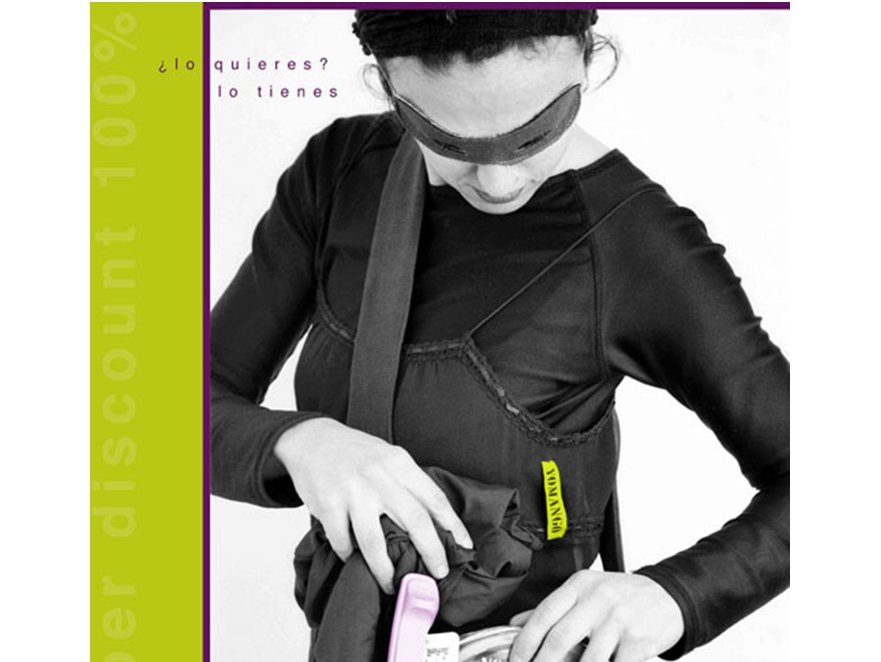
Fashion Industries seem to do anything they can for a little attention. Between the “Sexy Omish teen” and the “Goth male widow” trends that appeared at Coachella Music Festival, the ‘art’ aspect of fashion becomes more absurd with time. The romanticization of the beating/ murder of women in photography, however, is nothing new. Hemult Newton (born in Germany in 1920) became famous for his sado-masochistic photography in Vogue Australia in 1959. In another part of the world, Guy Bourdin (born in Paris in 1928) became famous for his—slightly more violent–crime scene photography in the 1950s. The morality of his photos came into question with the rise of the feminist movement in the 1960s, when activists took note that the victims in these crime scenes were always women.
Besides shock value, what reasons would a high fashion industry have to advertise their clothing through depictions of beaten and battered women? If photographs like this are utilized to sell woman’s clothing, how can the abuse of women NOT become a norm? It is everywhere! Violent photography is not the only means by which women are exploited in the world of high fashion. The career of a model is frequently very bleak, in that successful models must begin their career around the age of 16, the median salary of a model in the US is about $32,000 per year, a high number of fashion models suffer from anxiety and/or depression, and the fashion industry sets unrealistic expectations of beauty that often lead to disorders like anorexia and bulimia. Despite these facts, countless women idolize models, and assume that their lives are as luxurious as the clothes that they wear in their photographs.

A third way women are exploited in the world of high fashion is through the making of clothing. Around the world, woman are working 12-14 hours a day, for only pennies per hour, to create textiles and garments. Why would women choose this work? Most of the time, they have no choice. Textile workers must make an income for their families, and most often do not have an education because they have been working since the age of 12. Do not assume that this only occurs in third world countries. Exploitation of woman in the sewing industry is prevalent California. Flor Marina, for example, came to the California from Mexico in order to give her children a better life. She found work at sewing shop in LA, and for 40 days, Molina was forced to work from 4am to 10pm every day. Although she quit, the emotional scars of slavery still haunt her.
In conclusion, the fashion industry exploits women in almost every way possible. It exploits the models that sell the clothing, the women who create the fabric of the clothing, and utilizes the exploitation of women as artwork through fashion advertisements. Despite this, women are the primary consumers of high fashion brands, such as Jimmy Choo. The majority of women are ignorant to the abuses in that occur in sewing factories (especially in the US), and to the struggles of a working model. If these issues were more prevalent in the everyday fashion consumer’s life, there might be more of an effort to eradicate them. But why do magazines continue to buy fashion adds that show women being beaten and abused? I assert that violent photography has a shock value that is hard to beat. This is why the violent exploitation of women in fashion magazines continues to be ogled at by women today; women who are now used to seeing these violent images, and do not think much of them.
Is this why violent fashion adds do not bother fashionistas to the point of revolt? Are we simply used to them? Why do women around the world continue to support high fashion companies, despite the violence against women depicted in their advertisements? Women around the world continue to buy into an industry that exploits them for all they are worth. It is a sad juxtaposition that needs to end. The world of fashion does not have to be the world of victimized, exploited women. Fashion industries could resort to other means of advertising that do not involve a jaw-dropping photograph of a bloody, beaten, or sexually victimized woman. It does not have to be a world of overworked, underpaid sewers. It does not have to be a world of anorexic, depressed models. The ultimate goal would be for the fashion industry to evolve into a world that empowers woman in every way: through their workers, their models, and their photographs. The ultimate goal would be to create an industry of happy, healthy workers and models; an industry with photographs of strong, powerful woman wearing high fashion clothing. This does not seem like a difficult goal, but as of right now it is most definitely not the norm.







